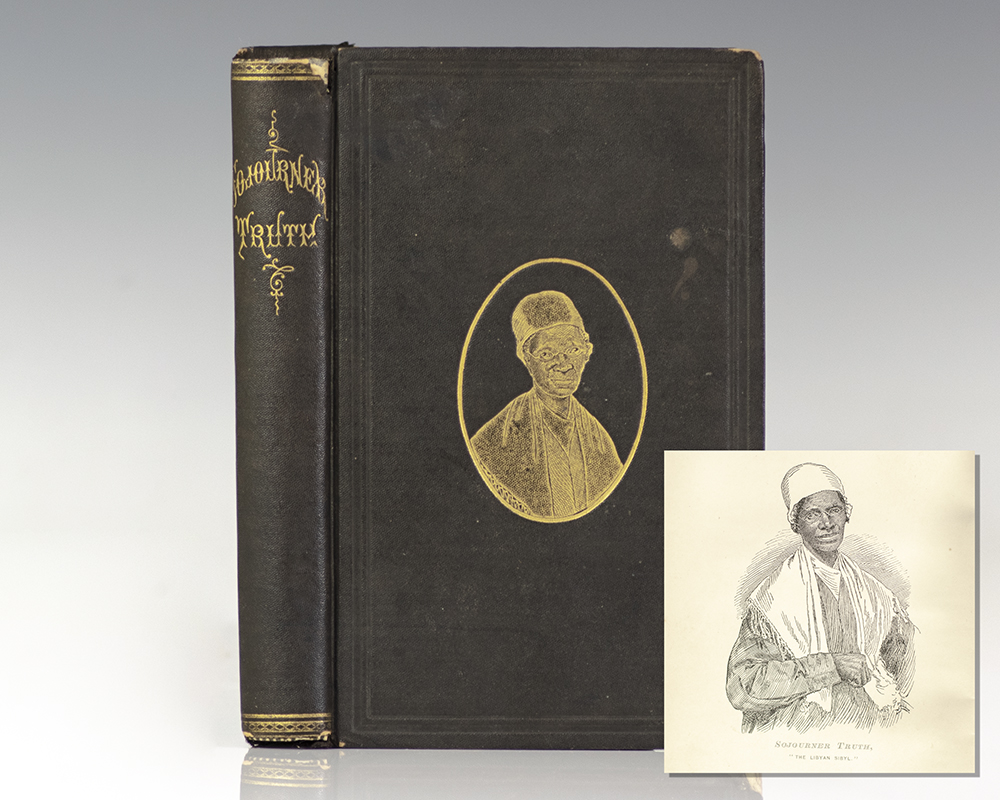Narrative of Sojourner Truth, A Northern Slave, Emancipated From Bodily Servitude by the State of New York, in 1828.
“I feel safe in the midst of my enemies, for the truth is all powerful and will prevail": First edition of Narrative of Sojourner Truth, A Northern Slave, Emancipated From Bodily Servitude by the State of New York, in 1828
Narrative of Sojourner Truth, A Northern Slave, Emancipated From Bodily Servitude by the State of New York, in 1828.
TRUTH, Sojourner.
Item Number: 123880
Boston: Printed For The Author, 1850.
Rare first edition of the book that brought Truth’s remarkable story to the world. Octavo, original cloth stamped in blind with gilt titles to the front panel, engraved frontispiece portrait of Truth. In very good condition. Ownership inscription, front panel with some wear.
“A legend in her own time, Truth’s indomitable will has won her a permanent place in American History. Her evangelic fervor and plain wit helped to advance the causes of emancipation and women’s rights” (Blockson 29). Evangelist, abolitionist, reformer and women’s rights advocate Sojourner Truth was born to James and Elizabeth Baumfree, both slaves of a Dutch family in Ulster County, New York. Named “Isabelle” by her parents, she developed deep religious feelings from her mother, from whom she was separated at age nine. After a number of new masters, and four children later, she escaped her last servitude shortly before the mandated New York State emancipation took effect on July 4, 1827. “I did not run off, for I thought that wicked, but I walked off, believing that to be all right.” In 1843 she renamed herself “Truth” for God, and “Sojourner” because she intended to “travel up and down the land,” preaching and testifying. She became associated with such renowned abolitionists as William Lloyd Garrison, Frederick Douglass, and David Ruggles, and toured the country speaking out against slavery. Her Narrative, dictated to her friend Olive Gilbert and subsidized by Garrison, gave Sojourner an income and increased her speaking engagements, where she sold copies of the book. In 1854, at the Ohio Woman’s Rights Convention in Akron, Ohio, she gave her most famous speech— with the legendary refrain, “Ain’t I a Woman?”: “That man over there says that women need to be helped into carriages, and lifted over ditches, and to have the best place everywhere. Nobody ever helps me into carriages, or over mud puddles, or gives me any best place, and ain’t I a woman?… I have borne thirteen children and seen most all sold off to slavery and when I cried out with my mother’s grief, none but Jesus heard me— and ain’t I woman?” (Blockson, 3434; Schomburg, 326).
We're sorry, this item has sold.






